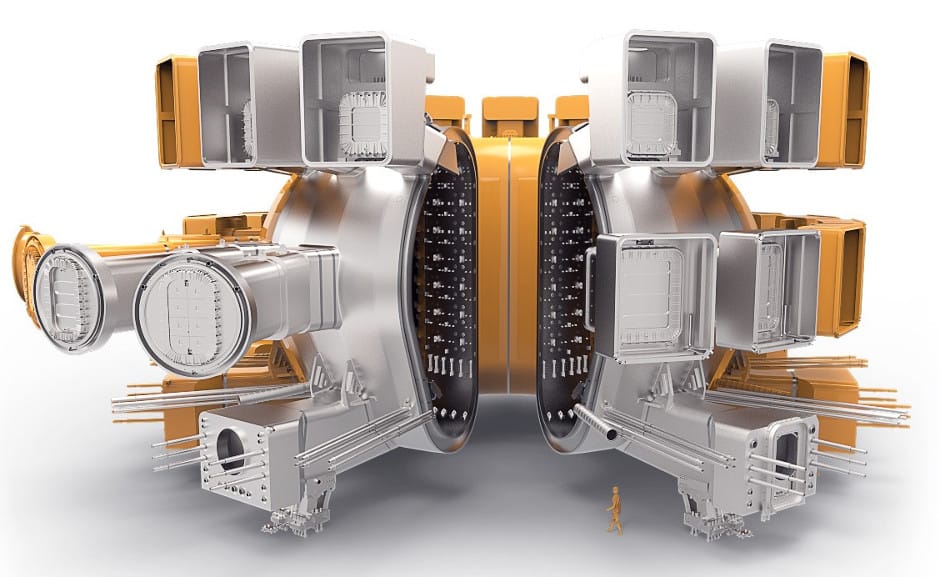
However, despite years of research into the process, challenges remain about how to create and maintain the extremely high temperatures and pressures needed for sustained fusion.
One important factor is turbulence, which can decrease the temperature and pressure of the plasma inside the reactor, reducing the amount of fusion power that can be generated.
Now researchers at York University are investigating ways to suppress this turbulence, in the hope of increasing the amount of fusion power that can be produced by reactors such as the ITER Tokamak project in southern France.
The EPSRC-funded project, which also includes the UK Atomic Energy Authority as well as researchers from the Universities of Oxford, Strathclyde and Warwick, is also aiming to investigate ways in which the same amount of fusion power can be generated from smaller reactors, which would be cheaper and quicker to build and commercialise.
To generate thermonuclear fusion, a plasma of deuterium and tritium contained within a magnetic field must be heated to 100 million degrees Kelvin – ten times the temperature at the centre of the sun. This causes the nuclei to fuse together to form a heavier nucleus, helium, releasing large amounts of energy in the process.
As the plasma is heated, the pressure at the centre increases towards fusion conditions, while that at the edges remains low, to be compatible with the material surfaces of the vessel, according to Professor Howard Wilson at York, who is leading the project. “The steeper you can make your pressure gradient, the higher you can make your central pressure, and the more fusion power you’ll get out,” he said.
However, as the pressure gradient increases, it causes the plasma to begin churning, generating turbulence. This turbulence then pushes heat and charged particles out from the centre of the plasma to the edges, reducing the pressure gradient, and the amount of fusion power that can be produced.
“If this churning didn’t happen, then you wouldn’t get this loss of heat and particles across the magnetic field lines,” said Wilson. “In this way, you could support a very big plasma pressure gradient, and achieve a high pressure in the centre and lots of fusion power,” he said.
Alternatively, you could achieve the same amount of fusion power, but from a smaller reactor, he said.
To investigate ways of suppressing this turbulence, the researchers plan to use advanced simulation, alongside experiments at the newly upgraded MAST-U reactor at the Culham Centre for Fusion Energy.
The researchers are developing models for how the plasma behaves, and how the turbulence is generated, but the process is an extremely complex one to simulate, said Wilson.
“Turbulence in a fluid like water usually only depends on what we call the fluid variables, parameters like pressure and flow,” he said. “But in a plasma, there are a whole range of new waves that don’t exist in neutral fluids like water or gas, as well as certain characteristic drifts of the particles that can resonate with those waves, amplify them, and cause them to crash and churn up the plasma, driving the turbulence.”
So the researchers are aiming to develop models that simplify this process while keeping as much of the plasma physics as possible. They will then compare their predictions with data from real tokamak reactors, such as MAST-U, he said.
“Then we can use our simulation codes to predict the level of turbulence that we’d expect to see in a real fusion reactor, like ITER, and how we should optimise the plasma scenarios to give us the lowest turbulence state.”




Project to investigate hybrid approach to titanium manufacturing
What is this a hybrid of? Superplastic forming tends to be performed slowly as otherwise the behaviour is the hot creep that typifies hot...